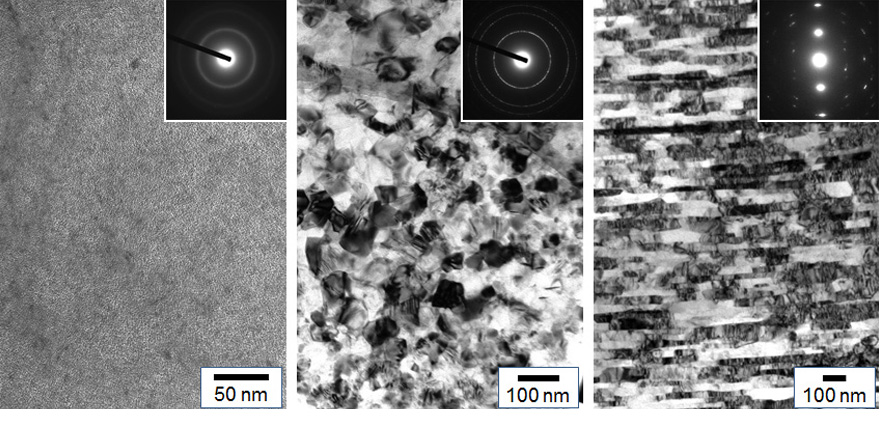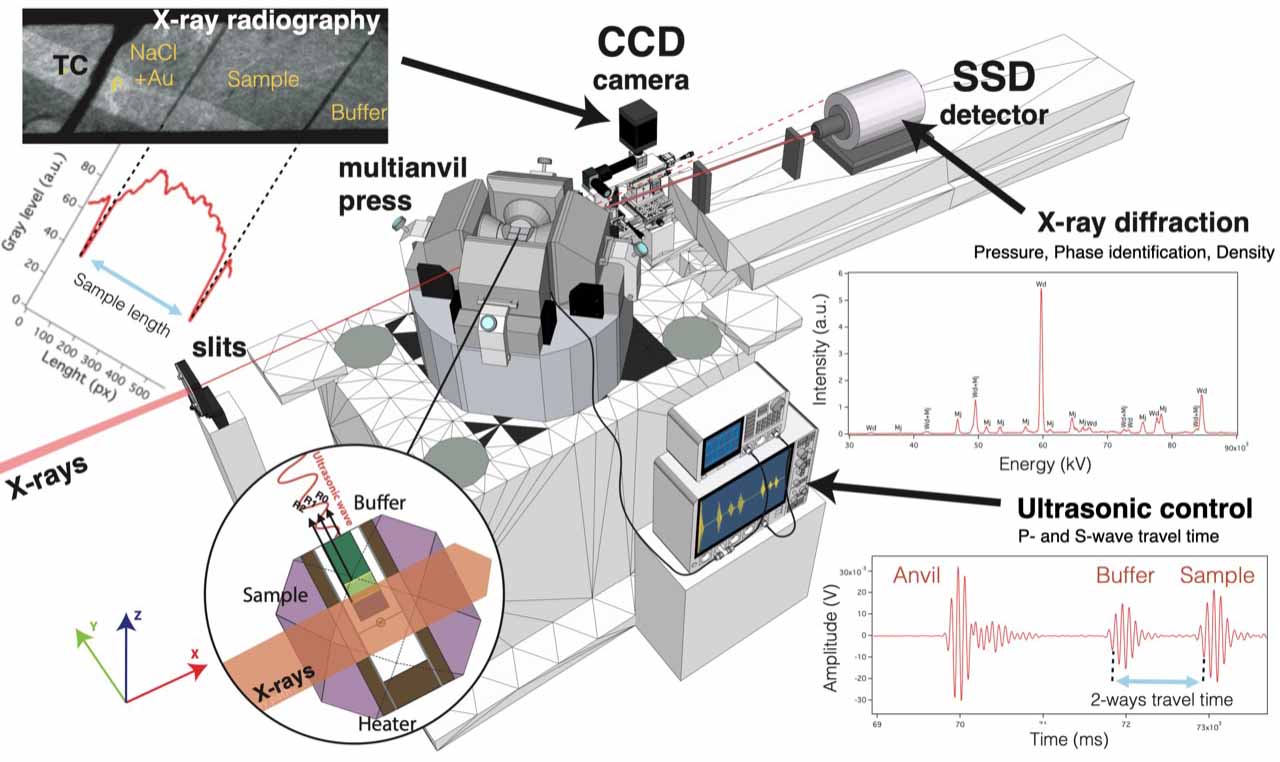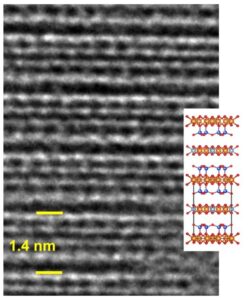Nanoscale Characterization of Mineral Formation
The heterogeneity in the crystal structure and chemical composition of the mineral presents us with an important clue to understand the formation mechanisms of the mineral. Although minerals appear homogeneous on the macroscale, on the nanoscale they are heterogeneous. Such a nanoscale heterogeneity records the formation conditions of minerals. By visualizing the atomic-level heterogeneity using transmission electron microscopy, we will be able to decipher the series of geologic events that the mineral has been through. Especially, the formation mechanisms of hydrous minerals are studied by means of high-resolution transmission electron microscopy to understand the water-mediated crystallization process. We also applied our nanoscale characterization techniques to the nanomaterial characterization.
Dynamic properties of deep Earth
Dynamic properties including rheology, element diffusion, reaction kinetics and acoustic emission, of deep Earth materials are studied based on experimental petrology. In studies of rock rheology, viscosity and development of deformation microstructure are investigated in terms of high-pressure and high-temperature deformation experiments under the deep Earth conditions using D-DIA and D111-type apparatuses, which give constraints on time scale of material transport and flow pattern in the Earth’s deep interior. Through the microstructural observation of recovered samples using various analytical methods, elementary processes which control rheology and diffusion are explored. In addition to the above, based on measurements of acoustic emission in deforming rock, studies are carried out to elucidate the mechanism casing deep-focus earthquakes.
Recent ongoing research subjects are (1) nature of material transport in the mantle investigated from viscosity measurements on mantle minerals, (2) role of deformation induced lattice-preferred-orientation of mantle minerals in the seismic anisotropy, (3) mechanism of deep-focus earthquakes investigated from acoustic emission measurements on mantle minerals under high stress conditions, and (4) evolution of chemical and physical state of mantle studied from reaction and diffusion experiments.

Understanding crystallization in Earth and material sciences
Minerals often record various information in their microstructures, which are valuable to infer the formation process and physicochemical conditions under which they crystalize. We investigate such mineralogical features (e.g. microtexture, crystal structure, chemical properties, crystallographic orientation) of synthetic (and sometimes natural) minerals/materials formed under high pressure and high temperature using electron microscopy to understand the physics and chemistry behind their crystallization process. Recently, we have positively applied this approach also to material science studies. For example, our studies demonstrate that the phase transition mechanism and microtextures of nano-polycrystalline diamond (NPD) synthesized by direct conversion are largely influenced by the crystallinity of the graphite starting materials. That is to say, the microtexture of NPD can be controlled by choosing graphite sources with different crystalline states, as shown in the xxx figure.

Experimental Mineral Physics and Petrochemistry
Based on the state-of-the-arts technologies in ultrahigh-pressure experiments, using both large volume press (LVP) and diamond anvil cell (DAC) combined with synchrotron radiation, cutting-edge studies are being pursued on the phase transitions, melting relations, element partitioning, density and sound velocities, etc., of the Earth’s mantle and core materials, as well as those in subducting slabs and in materials relevant to exo-terrestrial bodies. The goal of this group is to address the evolution and dynamics in the Earth’s and planetary deep interiors.

Members
| Name | Position | |
|---|---|---|
| Tetsuo Irifune | Professor | researchmap |
| Yu Nishihara | Professor | HP / CV |
| Tomohiro Ohuchi | Associate professor | HP / CV |
| Steeve Gréaux | Associate professor | CV |
| Hideharu Kuwahara | Lecturer | CV |
| Sayako Inoue | Assistant professor | CV |
| Youyue Zhang | Assistant professor | CV |
